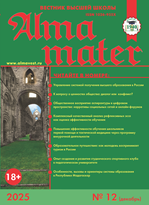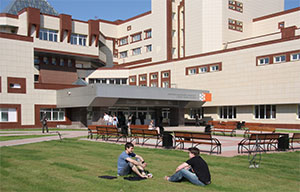UDC 37.09:378
https://doi.org/10.20339/AM.06-22.077
Olga V. Yanuschik, Cand. Sci. (Pedagogy), Associate Professor, Department of Mathematics and Computer Science at National Research Tomsk Polytechnic University & Associate Professor, Department of Comprehensive Information Security of Electronic Computer Systems at Tomsk State University of Control Systems and Radioelectronics, e-mail: yanuschik@tpu.ru
Irina G. Ustinova, Cand. Sci. (Engineering), Associate Professor, Department of Mathematics and Computer Science at National Research Tomsk Polytechnic University, e-mail: igu@tpu.ru
Oksana N. Efremova, Cand. Sci. (Pedagogy), Associate Professor of Department of Mathematics and Computer Science at National Research Tomsk Polytechnic University, e-mail: fedor@tpu.ru
The Flipped Classroom technology is an active, student-oriented form of learning that is used for improve the quality of classroom lessons. This technology attracts the attention of teachers of various disciplines for many reasons, such as a significant reduction in classroom hours, the ability to build an individual learning trajectory, the development of self-education skills, continuous learning, etc. The Flipped Classroom technology has become widespread all over the world, but in our country it is not used often, mainly in the teaching of humanities. That’s why we want to share our experience of using this technology in the study of mathematics at a technical University, as well as to consider the advantages and disadvantages of this technology, the conditions for its application and compare the effectiveness of the Flipped Classroom technology with traditional training. In addition, the advantages of the “inverted class” technology are shown in terms of optimizing lectures, of motivating students to study the subject, and focusing on the development of students’ abilities to independently master knowledge. The article presents the experience of implementing this technology in a technical university, which lasts for 5 years. The results obtained allowed us to conclude about the effective organization of lectures in mathematics with the use of the flipped classroom technology and its promising application in preparing students for classes in mathematics.
Key words: mathematics, students, engineering education, the Flipped Classroom technology.
References
- Borzova, T.A. Principles of organization of the first-year IWS in the technology “inverted class”. Higher Education in Russia. 2018. No. 8. P. 80–88.
- Vulfovich, E.V. Organization of independent work in a foreign language based on the “inverted class” model. Higher Education in Russia. 2017. No. 4. P. 88–96.
- Bergmann, J., & Sams, A. Flip your classroom: Talk to every student in every class every day. Washington. DC: International Society for Technology in Education, 2012. P. 120–190.
- Zappe, S., Leicht, R. Flipping the Classroom to Explore Active Learning. In: Proceedings, American Society for Engineering Education Annual Conference & Exhibition. 2020. URL: https://www.researchgate.net/publication/260201119_Flipping_the_classroo...(accessed on: 12.04.2022).
- Tarbokova, T.V., Ustinova, I.G., Rozhkova, O.V. Application of the technology flipped classroom in the course study linear algebra and analytical geometry. 12th International Technology, Education and Development Conference (INTED2018) proceedings, Valencia, March 5–7, 2018. Valencia, IATED, 2018. P. 4795−4802.
- Shestak, N.V. Lecture at the University in the context of the competence approach. Higher Education in Russia. 2018. No. 8. P. 43–53.
- Verbitskaya, I.N., Zharikova, L.A. Presentation makes a lecture on mathematics more effective. Higher Education in Russia. 2011. No. 6. P. 163–168.
- Konkov, D.S. Audiovisual and interactive teaching methods: advantages and disadvantages. Higher Education in Russia. 2012. No. 8, pp. 115-120.
- Vasilyeva, Е.Ya. Foreign students’ perception of lectures in traditional and electronic forms. Alma mater (Vestnik vysshei shkoly). 2018. No. 12. P. 31–35. DOI: 10.20339/AM.12-18.031
- Bulanova-Toporkova, M.V., Dukhavneva, A.V., Stolyarenko, L.D. Pedagogy and psychology of higher education: Textbook. Rostov-on-Don: Phoenix. 2002. 544 p.
- Marquardt, Ch.M., Meyer, M.D., Schneider, M., Hilgemann, R. Learning handwriting at school — A teachers’ survey on actual problems and future options. Trends in Neuroscience and Education. 2016. No. 5. P. 82–89.
- Mueller, P.A. & Oppenheimer, D.M. The Pen Is Mightier Than the Keyboard: Advantages of Longhand Over Laptop Note Taking. Psychological Science OnlineFirst. 2014. P. 1–10.
- Larsen, R.J., Marx, M.L. An Introduction to Mathematical Statistics and its Applications. Boston: Prentice Hall. 2012. 630 p.











.png)






